![]()
|
Bourne
& Baker |
Location and period of operation:
|
W
Baker & Co |
Fenton |
1839
|
1932 |
| Earthenware
and Granite Ware manufacturer at
Market Place and Victoria Road, Fenton,
Stoke-on-Trent, England
|
| Fenton Potteries (W.
Baker & Co) "The goods produced here were of the ordinary class of printed, songed, and pear-white granite ware suitable for the British North American, United States, West Indian, African, and Indian markets. Messrs W.Baker & Co. started in High Street, Fenton, in 1839. In 1868, they moved to the Fenton Potteries and continued to 1932..." Ceramic Art of Great Britain 1800-1900 L Jewitt Ironstone and Granite ware W Baker capitalised on this Granite ware market, exhibition in the 1855 Paris Exhibition. Their telegram address was "Granite, Stoke-on-Trent". |
Selected by
the Committee for the Staffordshire Potteries
to exhibit at the Paris Universal Exhibition of 1855

Baker, W., and Co.
Fenton Potteries, Stoke-upon-Trent
Granite Ware

Baker &
Co
Manufacturers of WHITE GRANITE, Printed and all kinds of EARTHENWARE
suitable for Colonial
and Foreign Markets
Fenton Potteries, Staffordshire
The Pottery Gazette - May 1880


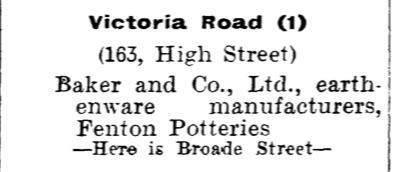
Baker &
Co., Ltd
Earthenware manufacturers
Fenton Potteries
from: 1907 Staffordshire
Sentinel
'Business Reference Guide to The Potteries, Newcastle & District'
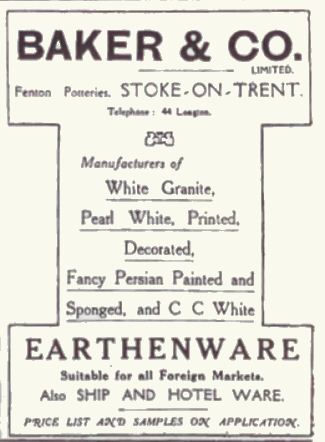
Baker &
Co., Ltd
Fenton Potteries, Stoke-on-Trent
Earthenware Suitable for all Foreign Markets
Also Ship & Hotel Ware
The Pottery Gazette Diary 1917
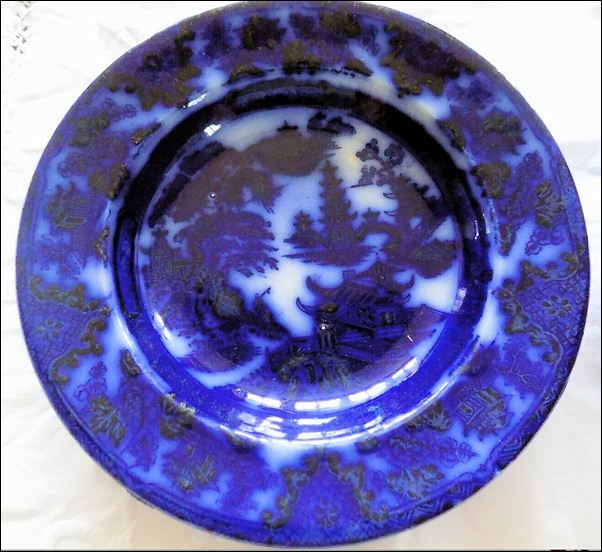
Flow blue bowl in the Shanghai
pattern
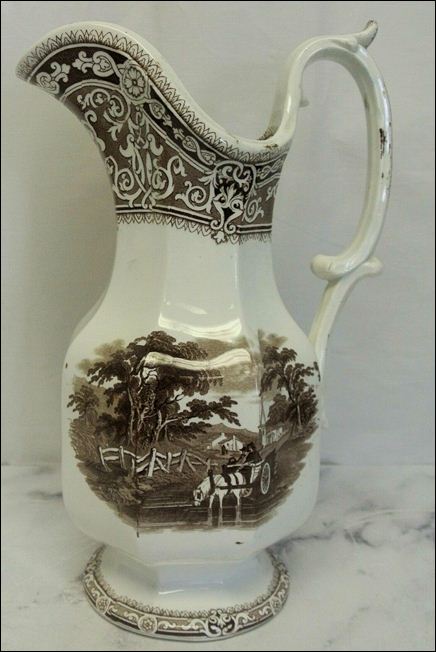
Ironstone jug in the Woodland
transferware pattern
Oriental
|
|
c.1893-early 1920s
Baker & Co was incorporated as a limited company in in 1893 and so the inclusion of 'LTD' dates this after that date.
This pattern was based on that of Joseph Clementson introduced around 1850
|
photo source: online marketplace - EBay.co.uk
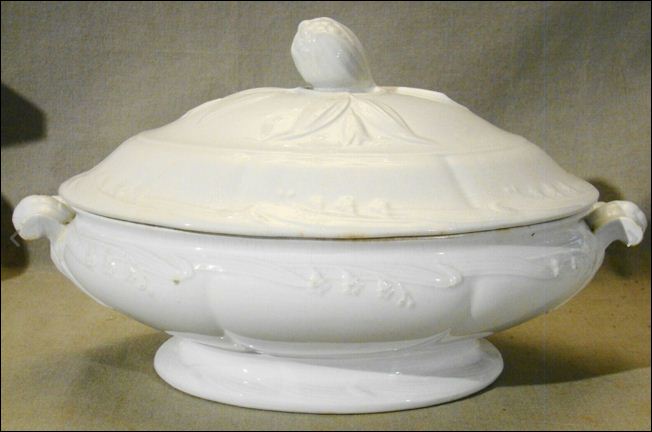
White Ironstone tureen
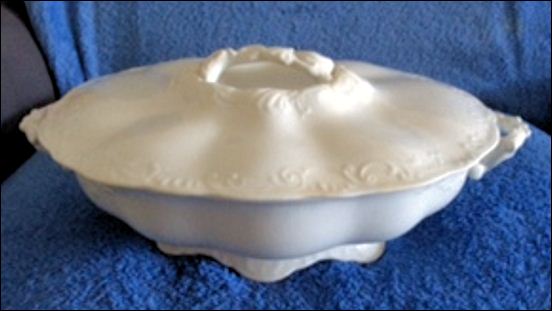
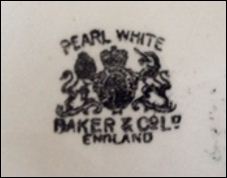
Tureen in the Pearl White body
c. 1893 to 1928 date range
photo courtesy: Patti Adcock
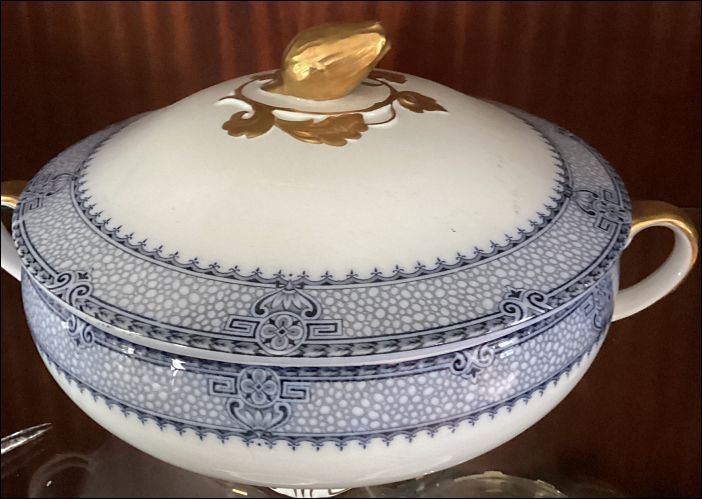
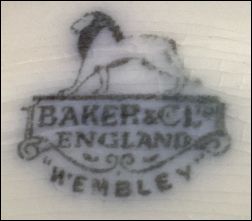
Baker & Co Ltd
England
covered serving dish in the Wembley pattern
probably from the 1920s
photos courtesy: Vivian van Delft
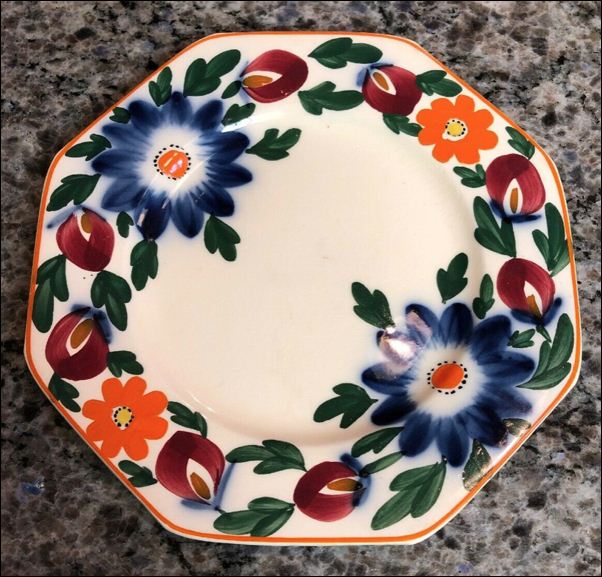
Octagonal handpainted side
plate
Old English
Handpainted
c.1930-32

Handpainted plate with fairy
and fruitborder
c.1930-32
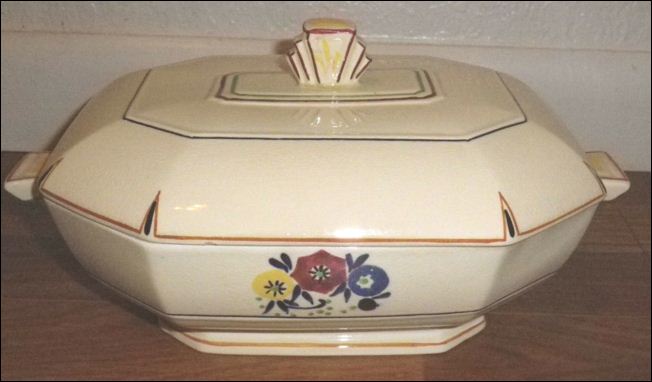
serving dish with lid
Art Moderne
c.1930-32
Marks used on ware for identification:
W BAKER & CO
BAKER & CO
Pearl China
Ironstone China
Pearl White Granite
Stone China
Royal Stone China
Royal Ironstone China
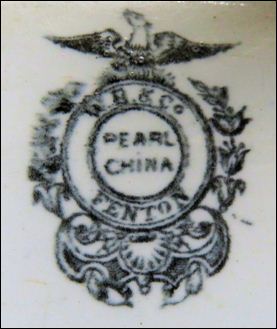 W.B. & Co Pearl China Fenton |
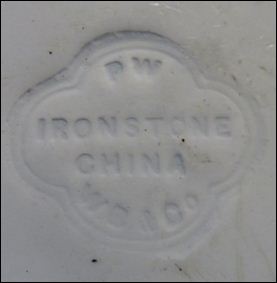 PW Ironstone China W B & Co |
|
c.1839-60 Both of these printed and impressed marks appear on the same platter.
The ware was likely made for the American market (hence the eagle on the top of the printed mark) |
|
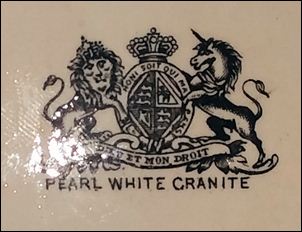
Pearl White Granite
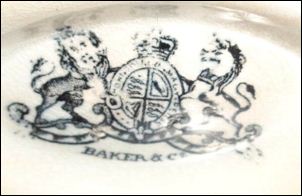
Baker & Co
c.1839-60
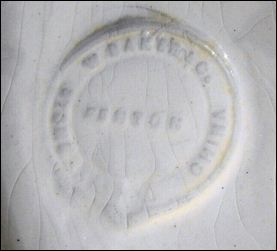
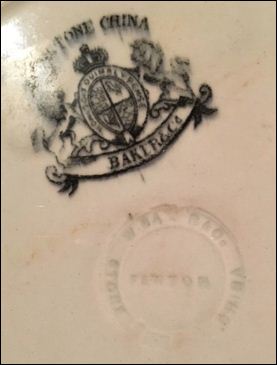
W. Baker & Co
Stone China
Fenton
c.1839-60
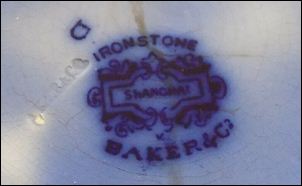
IRONSTONE
W Baker & Co
SHANGHAI is the pattern name
c.1860-93
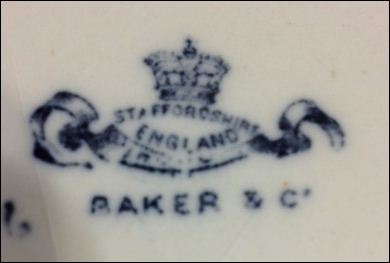 Staffordshire England Baker & Co |
 Royal Stone China Baker & Co England |
|
c.1891-93
|
|
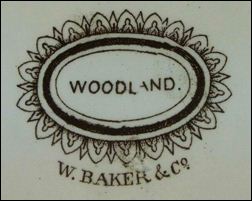 W. Baker & Co c.1860-1890 |
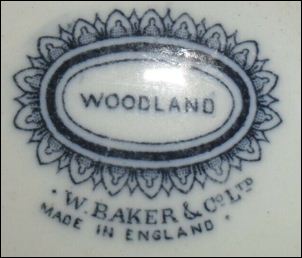 W. Baker & Co Ltd Made in England c.1893-1928 |
WOODLAND is the pattern name
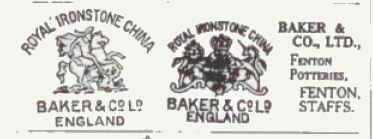
Royal Ironstone China
Baker & Co Ltd
England
these mark appear in the Pottery Gazette Diary 1917
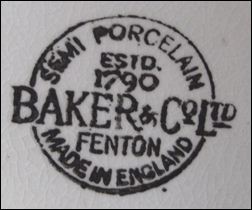 Baker & Co Ltd Semi Porcelain Estd 1790 Fenton Made in England |
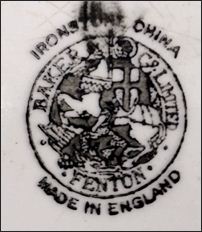 Ironstone China Baker & Co Limited Fenton Made in England |
c.1920s onwards
 Old English Handpainted Baker & Co Ltd England |
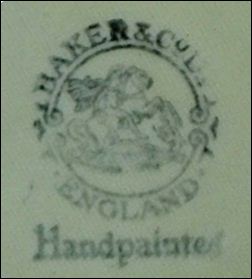 Baker & Co Ltd England Handpainted |
c.1930-32
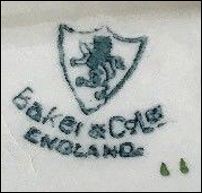
Baker & Co Ltd
England
c.1930-32

Baker & Co
England
Art Moderne
c.1930-32
![]() PHOTOS: Works, cottages,
workers houses
PHOTOS: Works, cottages,
workers houses
- click for more information -
Questions, comments, contributions? Steve Birks
|
Page created 5 September 2022 Last updated 2 December 2025: Example of 'Oriental' pattern added. |